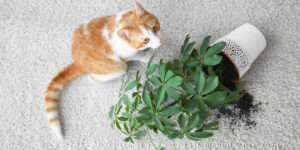
Dwarf Apple Trees: A Comprehensive Guide
Dwarf apple trees have become increasingly popular among gardeners and fruit enthusiasts due to their compact size, ease of care, and abundant fruit production. This article provides an in-depth look at dwarf apple trees, including their characteristics, benefits, growing conditions, care requirements, and common varieties. Additionally, a FAQ section will address common inquiries related to dwarf apple trees, along with a table summarizing key information.
What are Dwarf Apple Trees?
Dwarf apple trees are specially cultivated varieties that grow to a smaller size compared to standard apple trees. Typically, these trees reach a height of 6 to 10 feet, making them ideal for small gardens, patios, and even container gardening. Dwarf apple trees are grafted onto specific rootstocks that limit their growth, allowing for easier maintenance and harvesting.
Characteristics of Dwarf Apple Trees
- Size: Dwarf apple trees generally range from 6 to 10 feet in height, while mini-dwarf varieties can be as short as 2 to 4 feet.
- Fruit Production: Despite their smaller size, dwarf apple trees can produce a significant amount of fruit, often yielding 20 to 30 apples per tree annually, depending on the variety and care provided.
- Rootstocks: Common rootstocks used for dwarf apple trees include M27, M9, and P22. These rootstocks influence the tree’s size, vigor, and fruiting characteristics.
- Growth Rate: Dwarf apple trees typically reach maturity and begin producing fruit within 2 to 3 years of planting, much faster than standard-sized trees.
Benefits of Growing Dwarf Apple Trees
- Space Efficiency: Dwarf apple trees require less space than traditional apple trees, making them suitable for urban gardens and small backyards.
- Ease of Maintenance: Their smaller size allows for easier pruning, harvesting, and care without the need for ladders.
- Container Gardening: Many dwarf apple varieties can be grown in containers, allowing for flexibility in planting locations and easy mobility.
- Early Fruit Production: Dwarf apple trees often bear fruit sooner than standard trees, providing quicker gratification for gardeners.
- Pest and Disease Management: Smaller trees can be easier to protect and manage against pests and diseases, often requiring fewer chemical treatments.
Growing Conditions for Dwarf Apple Trees
- Sunlight: Dwarf apple trees thrive in full sun, requiring at least 6 to 8 hours of direct sunlight daily for optimal growth and fruit production.
- Soil: Well-draining soil rich in organic matter is ideal. A pH level of 6.0 to 7.0 is preferred for healthy apple tree growth.
- Watering: Regular watering is crucial, especially during dry spells. However, overwatering should be avoided to prevent root rot.
- Fertilization: A balanced fertilizer should be applied in early spring to promote healthy growth and fruiting.
- Pollination: Many apple varieties require cross-pollination for optimal fruit set. Planting two or more different varieties nearby can enhance fruit production.
Common Varieties of Dwarf Apple Trees
| Variety | Description | Fruit Size | Harvest Time |
|---|---|---|---|
| Honeycrisp | Sweet and crisp, excellent for fresh eating | Medium | Late summer |
| Fuji | Sweet and juicy, great for eating and cooking | Large | Late fall |
| Gala | Sweet and aromatic, perfect for snacking | Medium | Late summer |
| Granny Smith | Tart flavor, ideal for baking and cooking | Medium | Early fall |
| Golden Delicious | Sweet and versatile, good for fresh eating and baking | Medium | Early fall |
Care Requirements for Dwarf Apple Trees
- Pruning: Regular pruning is essential to maintain shape, remove dead or diseased branches, and encourage healthy growth. Prune during the dormant season (late winter to early spring).
- Pest Control: Monitor for common pests like aphids, codling moths, and spider mites. Use organic pest control methods when possible.
- Disease Management: Dwarf apple trees can be susceptible to diseases such as fire blight and powdery mildew. Proper spacing, air circulation, and sanitation practices can help mitigate these risks.
- Winter Protection: In colder climates, provide winter protection by wrapping the trunk with burlap or using mulch around the base to insulate the roots.
Frequently Asked Questions (FAQ)
1. How long do dwarf apple trees live?Dwarf apple trees typically have a lifespan of 15 to 20 years, which is shorter than standard apple trees that can live 35 to 45 years.
2. Can dwarf apple trees be grown in containers?Yes, many dwarf apple varieties are suitable for container gardening. Ensure the container is large enough to accommodate the root system and provides adequate drainage.
3. How much fruit can I expect from a dwarf apple tree?A mature dwarf apple tree can produce 20 to 30 apples per year, depending on the variety and growing conditions.
4. Do I need multiple trees for pollination?Many apple varieties require cross-pollination to set fruit effectively. Planting two or more different varieties nearby is recommended for better yields.
5. What is the best time to plant dwarf apple trees?The best time to plant dwarf apple trees is in the spring or fall when the weather is cooler, and the soil is workable.
Conclusion
Dwarf apple trees are an excellent choice for gardeners looking to grow their own fruit in limited spaces. With their compact size, ease of care, and early fruit production, these trees can provide a rewarding gardening experience. By understanding their needs and characteristics, anyone can successfully cultivate dwarf apple trees and enjoy fresh, homegrown apples.For more detailed information on apple trees, you can visit the USDA’s guide on apple tree cultivation.


